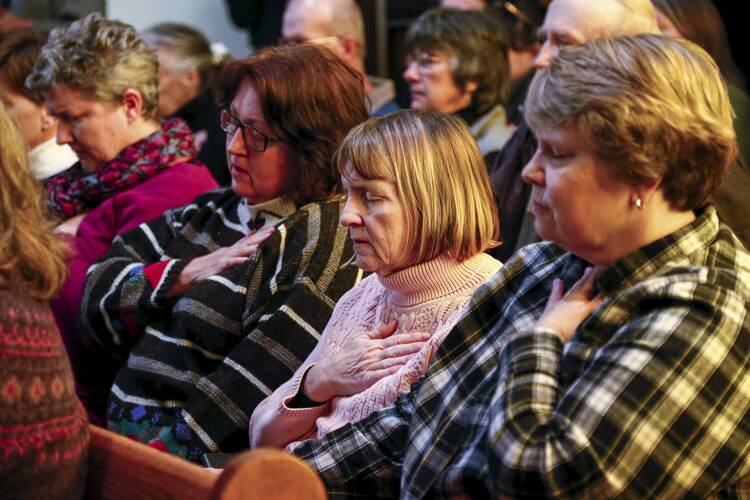What should we do about abortion clinic violence? First, recognize that the question is at the intersection of a broken political conversation about abortion and a compulsion for immediate responses to tragic events. Second, focus attention on a better question. What should we do about mass-shooting violence?
We live in an age of instant activism and analysis via social media that produces a drive towards explanations, conclusions and plans of action almost before disasters have concluded. It’s not surprising that the recent shootings at the Planned Parenthood in Colorado Springs have been yoked into an ongoing hashtag campaign already, most notably by NARAL Pro-Choice America: #InvestigateClinicViolence.
Yet, we know very little about the motives of the shooter, and very far from enough to say that his actions were part of any pattern or broader plan. Beyond the location, the only indication we have about his motive is an unnamed law enforcement official who said that the suspect made remarks about “no more baby parts.” Even the unnamed official wouldn’t draw an explicit conclusion, telling CNN that while the suspect held anti-abortion views, that doesn’t mean, in his view, that those opinions were the motive.
The official statement from the law enforcement agencies leading the investigation was starker, as they refused to provide details on motive, saying on Twitter: "Unofficial motive/details on #CentennialBlshooting may impact investigation/prosecution @CSPDPIO @EPCSheriff ONLY official info source."
Meanwhile, a number of pundits and media professionals jumped to associating this violence with the pro-life movement at large, jumping into the “ready-made narrative,” as Charlie Camosy explains, “that pro-life Christians incite this kind of anti-choice terrorism on a regular basis.”
For people who are already convinced that opposition to abortion arises not from a concern for the defense of unborn human life, but from an atavistic desire to control women’s bodies, this narrative is attractive. It’s even more attractive to conclude that this violence was triggered, if not caused, by the most recent significant challenge to the dominant pro-choice narrative, the series of videos released by the Center for Medical Progress focusing on Planned Parenthood’s participation in sourcing fetal tissue (i.e., “baby parts”) for research. But that may tell us more about the motives that pro-choice advocates impute to pro-life activists than about anything else.
Whenever this kind of violence happens, pro-life groups immediately condemn it, and there are no credible voices in the pro-life movement calling for violence against abortion clinics or providers.
If you don’t remember hearing a lot of the denunciations of anti-abortion violence, perhaps that’s because—though any episode of violence is of course one too many—they haven’t been frequently necessary. Why? Attacks against abortion providers, while terrible and very well covered in the media for the most part, are thankfully not very common. The National Abortion Federation’s page on abortion-related violence lists the last killing before the events in Colorado as the 2009 shooting of Dr. George Tiller; all the deadly events prior to that are in the 1990s.
There have been four arson incidents at abortion clinics in recent months, which is what initially inspired NARAL’s #InvestigateClinicViolence campaign for these to be treated and investigated as “domestic terrorism.” They do deserve to be investigated; however, it is unclear whether or not those incidents are themselves connected, much less connected to the shootings in Colorado.
Because those connections are so unclear, no one is served by rhetoric that suggests that pro-lifers have “incited” this violence by directing attention and criticism to the practice of abortion and fetal tissue harvesting. It is unfair to attempt to associate peaceful protesters with violent attacks, and it suggests that the pro-choice position is so weak and fragile that it cannot respond to criticism on its own terms, but only by impugning the motives of its opponents.
The more difficult truth is that we lack both the vocabulary and leadership for a reasonable debate about abortion that might actually produce meaningful change. While the American people are certainly not in favor of banning abortion outright, most of them also want greater restrictions than are currently in place or possible under the existing judicial framework governing abortion.
Meanwhile, though violence directed against abortion clinics remains rare, mass shootings have grown all too common, as President Obama again drove home in his statement following the shooting. He refused to speculate about the shooter’s “so-called motive” and instead directed our attention to something we know is a necessary factor in all mass shootings:
This is not normal. We can’t let it become normal. If we truly care about this—if we’re going to offer up our thoughts and prayers again, for God knows how many times, with a truly clean conscience—then we have to do something about the easy accessibility of weapons of war on our streets to people who have no business wielding them.
Here’s another pattern we should be outraged by—once again, a lonely and disturbed individual was able to take whatever demons, fear and anger he wrestled and give them guns. Once again, one man’s hate and rage, whatever its source, turned into mass violence that we have not been willing to defend against. And this is also a pro-life issue.
Some pro-choice activists are suggesting the pro-life community should be asking whether or not our rhetoric incites violence against abortion providers. I think there’s a more important question for us pro-lifers to ask: when will we be willing to demand that politicians who take a moral stand against abortion also get involved in a substantive conversation about how to mitigate the risks of gun violence and mass shootings?








